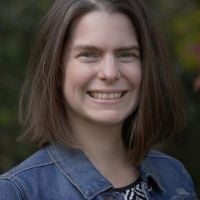Houston, the nation’s fourth-most populous city, is looking for ways to make sure it is offering affordable housing, including rentals, to residents, so that people who work in the city are actually able to live in it. That’s an obvious benefit to both them and their employers. But how do you actually do it?
Nationwide, even as the rental market is growing across all income levels and homeownership has decreased for eight years running, new apartments are predominantly built for the rich. Only about 10 percent of rental apartments coming into the market are affordable to people who make less than $35,000 per year — that is, the group that encompasses half the total number of rental households. The Joint Center for Housing Studies of Harvard University reports that the median asking rent for a new unit in 2013 was a startling $1,300 a month. Meanwhile, the rate of both subsidized and “naturally occurring” affordable units is shrinking, because owners are either raising rents in strong markets or, in weak markets, they let the units deteriorate until they become unlivable.
Still, despite these trends, Houston doesn’t have to start from scratch. A new report from the Urban Land Institute and NeighborWorks America showcases 16 of the best ideas for affordable rentals from around the country. Real estate economics haven’t been sufficient to ensure that the supply meets demand, but to be clear, these clever mechanisms aren’t about charity: According to the report, they have raised more than $3 billion and developed nearly 60,000 housing units, with more on the way. Many are able to offer returns to their investors.
Here’s a brass-tacks look at some of these ideas for how to build the new infrastructure for affordable housing.
The New Generation Fund — Los Angeles
Established in 2008, this fund is a partnership of the city’s housing and community investment department, local foundations and private financial institutions. It provides early financing for low-priced and moderately priced rental properties, and to date, it’s created or preserved 1,355 units in 14 developments. That includes the historic rehab of the downtown Rosslyn Hotel, which now houses 264 formerly homeless people, including 100 veterans. In August 2015, the city was able to leverage its renewed commitment of $10 million to bring in another $50 million in private capital. All of it will be used to provide revolving loans to affordable housing developers.
Rose Affordable Housing Preservation Fund — Boston, Chicago, Seattle, Washington, D.C, Connecticut
While the New Generation Fund is a private-public model that uses a below-market debt fund to create affordable housing, this is a private equity model. The Rose Affordable Housing Preservation Fund was founded in 2014 as an arm of Jonathan Rose Companies, a real estate investment company. It had $51.6 million in seed funding from TIAA-CREF and its parent company, which it plans to use to buy affordable and mixed-income multifamily housing in high-demand areas. The Fund will do a “green” retrofit on the buildings to reduce overall expenses before making them available to tenants. Beyond the above regions, Rose also plans to target developments in New York City, Los Angeles, Portland, Denver and the Bay Area.
The Community Development Trust — National
Affordable housing developers can also consider a real estate investment trust. This is a model created by the U.S. Congress in 1960 and tailored to small-scale investors. The Community Development Trust was founded in 1998 to produce subsidized housing, and it does so by finding local and national partners to make long-term equity investments. In the interest of preserving existing affordable units, the trust also originates and purchases mortgages. Its model means that it is also looking for ways to provide cash returns to investors. To date, this trust has invested over $1 billion in 42 states and regions, creating or preserving 36,000 affordable units. That includes Steinbeck Commons in Salinas, California, which offers 100 Section 8 rentals for seniors.
See the full report for ULI’s picks for the other 13 leading ideas in affordable housing.
Back in Houston, where rates for the same rental units have jumped by 50 percent in less than a decade, locals are talking about the “affordable housing crisis.” Ideas on the table include fast-track permitting for affordable housing developers, and land sale contracts that mandate that a certain percentage of developed units be set aside for workforce housing. In a city that has been unusually fierce in tackling homelessness, there are some developments already opening that show the promise of what an inclusive and humane Houston can look like.
But of course, it’s not just Houston that should take notice of these ideas. Homeownership today is at the lowest rate it’s been in almost 50 years. Too often misunderstood as a fundamentally transient class of citizens, renters are a crucial part of any healthy city. Providing residents with decent, diverse and accessible housing options translates into a city that millions of senior citizens, young adults, students, immigrants and workers can call home.

Anna Clark is a journalist in Detroit. Her writing has appeared in Elle Magazine, the New York Times, Politico, the Columbia Journalism Review, Next City and other publications. Anna edited A Detroit Anthology, a Michigan Notable Book. She has been a Fulbright fellow in Nairobi, Kenya and a Knight-Wallace journalism fellow at the University of Michigan. She is also the author of THE POISONED CITY: Flint’s Water and the American Urban Tragedy, published by Metropolitan Books in 2018.
Follow Anna .(JavaScript must be enabled to view this email address)
















